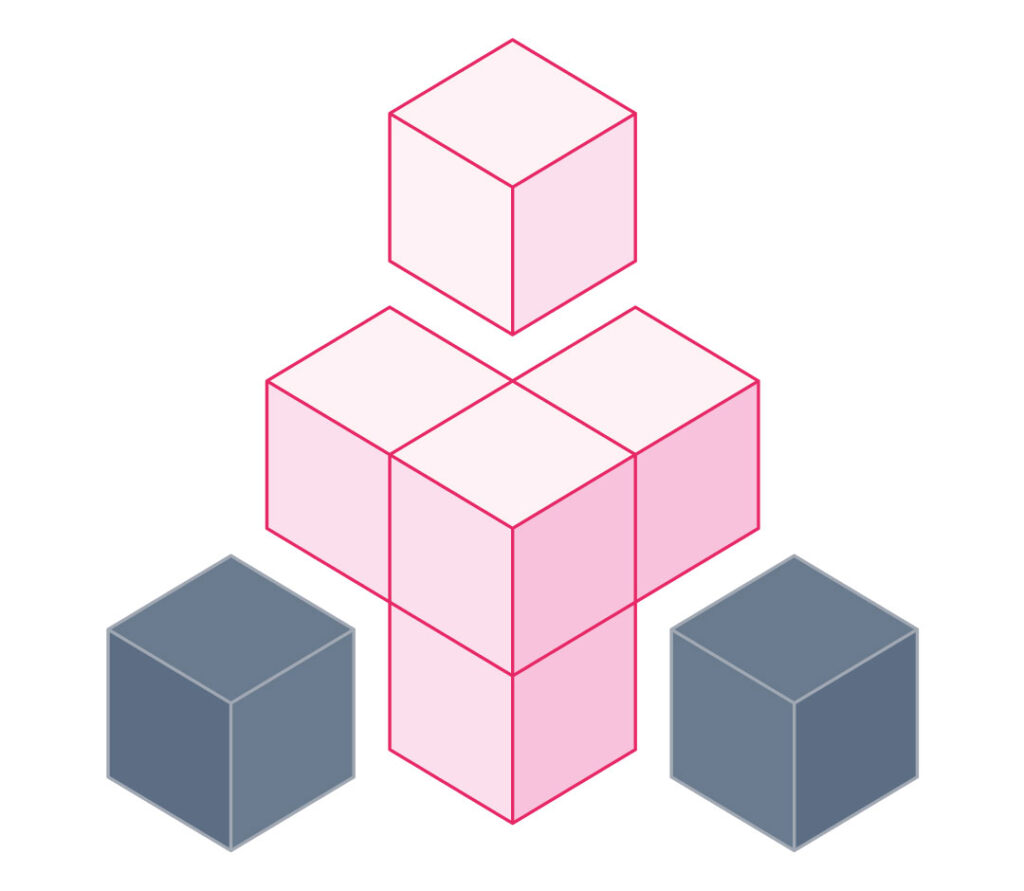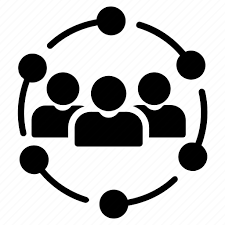At this level, the focus is on optimizing business processes, increasing efficiency, and driving innovation.
The organization should focus on improving operational excellence by streamlining processes and reducing waste. Effective project management, cross-functional collaboration, and strong leadership are essential for success at this level. The organizational structure should be designed to support growth and ensure accountability and transparency.
Model Fit
Organizations in that system have typically scaled a successful customer value proposition, and wants to adds more products and services while expanding the business with quality, speed, and reliability.

Expand offering
The driver is to expand the value proposition in multiple directions.

Decompose services
The main focus is to deliver the MVP with Quality at Speed software.

Domain Teams
Usually between $20-200m of annual revenues with 50-150 FTEs.
QE Blueprint
MAMOS III is designed to help mid-sized companies achieve a higher level of quality in their software development, while still being flexible enough to adapt to changing business needs.
MAMOS
Methods
“Decompose”
The methods at this stage enables to distribute the business complexity into separate services by different teams.
Specific practices are identified to ensure that distributed services collaborate effectively for end-to-end user experience and operations.
- OKR
- Central AR
- DDD Governance
- API Governance
- Technical debt backlog
- SLIs to SLOs
- Release Management
- Problem Management
Guiding Principles
- Keep core of practices reusable
- Leave adaptation to teams
- Keep transversal vision
- Ensure global consistency
- Contain entropy to start
Key Changes
- Distribute by domain services
- Core central coordination only
- Local coordination to reinforce
- Dependencies to decouple
- Imperative to contain entropy
Key Choices
- Global and local processes
- Rituals to keep global visibility
- Autonomy per domain teams
- Alignment mechanisms
- Detection of non-conformity
Key Actions
- Set global and local processes
- Establish and maintain rituals
- Let progressive autonomy
- Implement knowledge rituals
- Debt and entropy processes
ARCHITECTURE
“Service-based”
That stage consists in abstracting the growing business complexity into domain services from scratch or extracted from the modulith.
On key challenge is balance global optimization with local needs to iterate at speed while containing technical debt and an overall coherency to ease change.
- API-led
- Event-driven
- Services
- Data store per application
- IDP
- Quality Gates
- Continuous Monitoring
Guiding Principles
- Leverage scalable deployment
- Decouples front, back and data
- Split in services for flexibility
- One data store per application
- Contains distribution entropy
Key Changes
- New offerings are required
- Part of the product more stable
- Evolution at different speed
- Decoupling at domain level
- Modules extracted to services
- Data isolation per application
- Technologies can diverge
Key Choices
- Part of product to invest
- Domain services boundaries
- Priority of service isolation
- Patterns to distribute services
- Autonomy per perimeter
- Global and local standards
- Technologies per perimeter
Key Actions
- Define distribution priorities
- Structure service boundaries
- Set granularity standards
- Define migration patterns
- Set reusable foundations
- Technology radar per scope
- Refactoring and debt tracking
MANAGEMENT
“Develop Leadership”
This organizational stages comes with the hard-challenge of not being able to know, control, or interact with everyone.
Teams must combines leadership and management practices to foster a collaboration ecosystem iterating with parallel streams of value.
- Core leadership team
- Extended leadership team
- Management teams
- Vision cascade per team
- Company town-halls
- HR pipeline
Guiding Principles
- Staff leaddership positions
- Coach managerial positions
- Ensure cultural fit and values
- Cascade mission in teams
- Align multiple teams priorities
- Formalize measurements
Key Changes
- Can’t know everyone anymore
- New layers of leadership
- Management role changes
- Part of the work is black-box
- Teams have different missions
- Alignment effort to increase
Key Choices
- Members of leadership team
- Promote or hire managers
- Rituals for vision alignment
- Management standards
- Forecast and plan activities
- Roles incentives and measures
Key Actions
- Define leadership team
- Create extended leadership
- Clarify management layers
- Structure hiring for potential
- Keep vision and values alive
- Formalize management rituals
- Create HR forecast and plans
- Set objectives and incentives
ORGANIZATION
“Organize Interactions”
An organization growing in size and complexity must structure differently its teams to keep iterating at speed.
The organizational structure is critical to be aligned with the target service decomposition, defining the minimal yet necessary supporting, enabling, and managerial functions.
- Domain-driven teams
- Platform team
- Team Topologies
- Senior Director
- Senior Manager
Guiding Principles
- Build a platform ecosystem
- Isolate complexity
- Align org on services
- Ensure supporting structure
- Create leadership team
- Staff senior managerial level
Key Changes
- Leadership team grow
- New roles per vertical
- Can’t know everyone
- Part of work is black-box
- Systematic process needed
- Team matter more than one
Key Choices
- Keep or change the CTO
- Staffing of key leadership roles
- Team and domains boundaries
- Management expectations
- Team core expertise
- Cross-team interactions
- Metrics and KPIs
Key Actions
- Create leadership team
- Increase management level
- Define team boundaries
- Identify supporting teams
- Clarify interactions mode
- Staff supporting teams
- Staff enabling teams
- Setup team metrics & KPIs
SKILLS
“Spread with Leverage”
The team requires the necessary skills and knowledge to execute on the vision and build a successful product.
The key focus on the core skills that are critical and unique for the success of the product is essential to continuously improve and refine these skills throughout the company’s growth.
- Hire key core talents
- Externalize non-core
- Flexible partners
- Remote only or hybrid
- Remuneration packages
- Work policies
Guiding Principles
- Develop leadership skills
- Systematize hiring processes
- Staff to keep product core
- Get mix internal and external
- Make self-development priority
- Foster sharing communities
Key Changes
- Skill standardization needed
- Multiple expertise per scope
- Support skills increase
- Internal & external necessary
- Skills management plan to set
Key Choices
- Position and skill set
- Core expertise to keep internal
- Skills to externalize most
- Where to mix competencies
- Skills development mechanisms
Key Actions
- Identify core positions
- Map skills evolution
- Formalize key expertise
- Process skills acquisition
- Clarify core areas to invest in
- Implement skill development